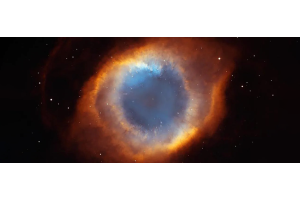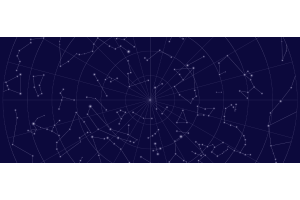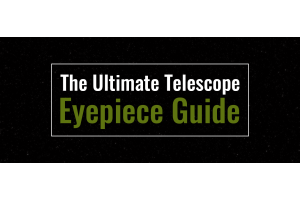In this episode of What's in the Sky this Month, Teagan reviews some of the beautiful celestial objects you can see in the month of August 2024!


Image credit: Petr Horálek / Institute of Physics in Opava
The Perseid Meteor Shower
The Perseids can usually be relied upon to put on a good show, and 2024 should be no exception - but you’ll need to stay up past midnight to have the best chance of seeing some shooting stars. The reason for this is twofold: firstly, the Moon is in the first quarter and won’t set until around midnight. Secondly, the shower reaches its peak between 9 AM and 12 PM ET on the 12th, making the early hours the best time to be outside.
This is also when the constellation Perseus, from which the meteors appear to radiate, will be rising over the eastern horizon. It’s therefore probably best to be outside sometime between midnight and 4:30 AM, when the Moon will be below the horizon, and the sky will have yet to brighten.
OUR NEAREST NEIGHBORS
Mercury is challenging but may be glimpsed low in the west at about 15 minutes after sunset for the first few days. Look roughly eight degrees to the left of Venus, which is now climbing into the evening twilight. A thin crescent Moon hangs above Venus on the 5th. Both Saturn and Neptune are rising in the evening but are best observed shortly before midnight. Look for the just-past full Moon very close to Saturn on the 20th. Uranus remains within the same binocular field of view as the Pleiades throughout August, while Mars and Jupiter put on a fine show for early risers. The planets are close to Aldebaran and the Hyades, with all three fitting within the same low-powered binocular field of view. Mars is just 0.3° from Jupiter on the 14th, with the crescent Moon nearby on the 27th and 28th. There’s also another chance to spot Mercury in the predawn twilight during the last few days of the month. It’s not bright and will be low in the east at around 15 minutes before sunrise. Lastly, the Moon turns new on the 4th, with the Full Sturgeon Moon occurring on the 19th.

Image credit: Viewfrom.earth
Epsilon Lyrae (The Double Double)
This famous multiple star is easily found, just 1.7 degrees from Vega, the brightest star in Lyra. Binoculars show two white stars of equal brightness, but a telescope at 100x or more will show each star split into pairs of equally bright white stars again.

Image credit: Tom Wildoner
Beta Cygni (Albireo)
Arguably the most popular double star in the entire night sky, Albireo marks the head of Cygnus the Swan. Almost any scope at a low magnification will show a brilliant gold primary, with a fainter sapphire blue companion. Not to be missed!

Image credit: Nevenka Blagovic & Miroslav Horvat
The Coathanger
The Coathanger can be found with an easy starhop. Simply look for the star Anser, three degrees south of Albireo, and then look for the Coathanger, 4.5 degrees further south again. It’s a little large for most scopes, but is a fine sight for binoculars.

Image credit: Jim Mazur
M27 - The Dumbbell Nebula
This famous planetary nebula lies 3.2 degrees north of Gamma Sagittae, and while it may be detected with binoculars, it is best observed with a telescope. A low magnification is all that’s needed to show its distinctive shape and some texture.
STELLAR CONCEPTS
Planetary Nebula: When a star nears the end of its life, the outer portion of its atmosphere expands and drifts off into space. Over the course of thousands of years, this shell of gas and dust expands and will often measure light-years in diameter. With a few exceptions (M27 being one) many appear as small discs through a telescope, not unlike a distant planet - hence the term, planetary nebula.









